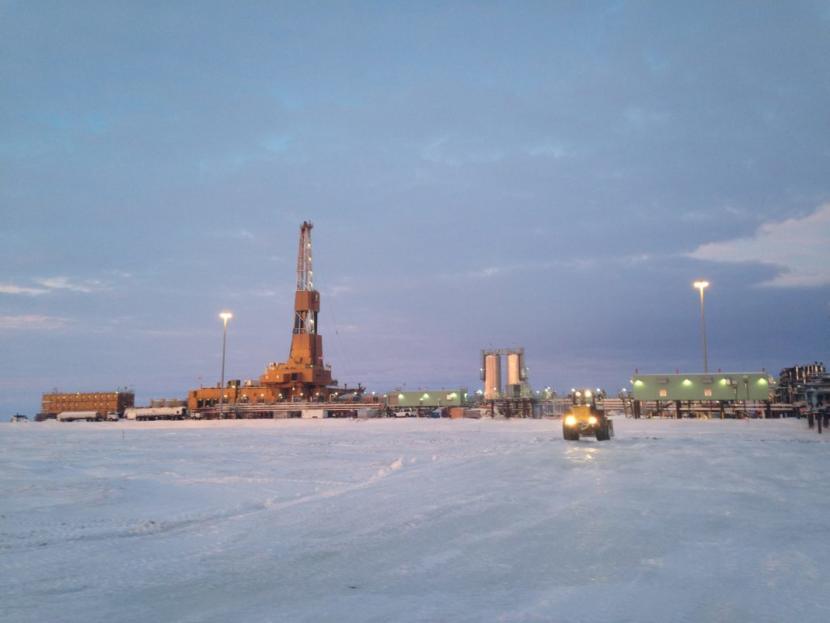
As he pitches a new North Slope liquefied natural gas project to investors, Mead Treadwell, the businessman and former Alaska lieutenant governor, is keenly aware of his project’s location.
Development in the Arctic is booming as the global climate warms and ice melts. But environmental opposition has come along with it, making some big banks more reticent about investing.
Barclays and Goldman Sachs, for example, have effectively ruled out investments in new Arctic oil and gas projects, after environmentalists raised concerns about impacts on ecosystems, indigenous people and the global climate.
Many other investors remain. But an aggressive advocacy campaign against their involvement in Arctic oil means that Treadwell’s company, Qilak LNG, and others like it face more obstacles to raise the cash they need.
Qilak has adapted to this new investment climate by playing up the fact that its LNG project would connect to infrastructure that already largely exists on the North Slope — not to new oil fields, which conservation groups say would extend the world’s dependence on climate-warming fossil fuels.
Qilak is also making the case that LNG often displaces dirty coal-fired power plants, though the environmental benefits of that change are disputed by some scientists. And it’s highlighting the jobs the project would create for indigenous residents of the North Slope and other areas of Alaska.
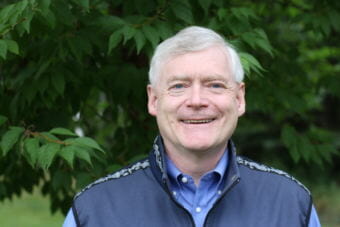
“I still believe that we will have billions of dollars in annual investment in the Arctic. But I will say that we’re an easier target, because it’s easier to show up at an annual meeting in some place like London or Brussels wearing a polar bear suit — there’s not a similar symbol for Louisiana or Texas,” Treadwell said. “We definitely have to be aware of that, and make sure we’ve got a good story.”
Alaska’s economy is driven by the production of the fossil fuels that contribute to global warming, which makes the state especially vulnerable to the campaign to transition away from oil. And Alaska policymakers and oil executives say they’re getting increasingly concerned as advocates turn their focus to forcing big financial institutions out of the industry.
The movement has been targeting Arctic oil and gas projects in particular, with groups arguing that development in the area poses unique environmental and social risks. The release of Goldman Sachs’ new environmental policy in December — which said the bank would refuse to finance drilling in the Arctic National Wildlife Refuge and elsewhere in the Arctic — underscored the stakes for Alaska. But the campaign doesn’t end there.
Last month, 15 Democratic U.S. senators wrote to 11 more banks asking them to follow Goldman’s lead by “shifting toward a U.S. financial sector that effectively analyzes and plans for climate risks.”
A similar letter followed Thursday from more than two-dozen House Democrats. On Friday, environmental organizations touted a new policy released by a big British bank, Lloyds Bank, that rules out financing of oil and gas exploration and production in the Arctic, and in the Arctic Refuge in particular.
On Tuesday, megabank JPMorgan Chase was set to announce its own restrictions on investment in Arctic drilling.
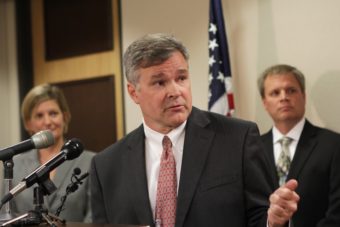
“One position by one large company I don’t think changes a lot,” said Andy Mack, a former Alaska natural resources commissioner who helped lead the state’s push to open the Arctic Refuge to drilling. “But if you see two or three or four large companies make these types of announcements, it’s certainly something that (oil) companies will all have to take into account. And that’s why the state needs to pay attention.”
Several big Arctic oil projects are still under development on Alaska’s North Slope. But there’s a growing acknowledgment among Alaska oil industry players that environmentalists’ lobbying of financial institutions is having an effect.
“‘Arctic’ seems to have turned into a four-letter word, in the minds of a lot of these financial institutions,” said an Alaska oil executive, who asked not to be named to avoid drawing attention to his particular company.
To understand the anti-Arctic campaign’s challenge to Alaska’s oil industry, residents can look to Alberta. There, financial institutions and major insurers have distanced themselves from projects in the province’s oil sands.
One reason environmental advocates have focused their opposition on Alberta is that historically, extraction from oil sands generated more greenhouse gases than conventional oil production.
Earlier this month, BlackRock, the world’s largest asset manager, announced it would exclude companies with oil sands projects from a fast-growing, sustainability-oriented fund that it runs.
In December, The Hartford, a major insurer, said it would stop investing in and insuring companies that generate a large share of their revenues from tar sands.
Alaskans who follow the oil industry have noticed.
“Alberta is the canary in the coal mine,” said Brad Keithley, a retired oil and gas attorney who closely watches Alaska politics.
Alberta’s premier, Jason Kenney, has responded forcefully, launching a $30 million “energy war room” to rebut criticism of Canada’s oil industry.
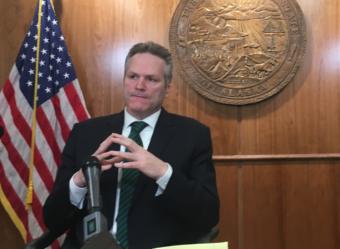
In Alaska, Gov. Mike Dunleavy reacted to Goldman Sachs’ announcement by firing the company from a group of Wall Street firms it had chosen to help the state borrow money. The decision could cost Goldman Sachs between $200,000 and $300,000 in compensation, state officials said.
In an interview, Dunleavy suggested another way to punish banks that refuse to invest in Alaska oil projects: cutting them off from managing the assets of the $67 billion, state-owned Alaska Permanent Fund, which was originally created with oil revenue. Goldman Sachs manages some $400 million for the fund, which paid the firm a total of $17 million in fees over the past three years.
“Some of these groups that don’t want to do business in Alaska still want Alaska business,” Dunleavy said. “They probably are going to come out a loser on that one.”
The Alaska Permanent Fund is run by an independent board. Earlier this month, Chair Craig Richards said board members were not interested in making its choices of investment managers subject to political considerations.
But Dunleavy said he thinks the subject will be unavoidable for the board.
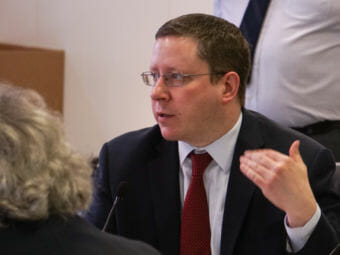
“I have to believe that the board members and those that are running the permanent fund have seen what some of these lending institutions have said about Alaska,” he said. “And I’m sure they’re having discussions in their boardroom as to how they should approach this.”
In Washington, D.C., the members of Alaska’s GOP Congressional delegation have sent their own letters to banking executives, asking them to disregard the Democratic lawmakers’ request that they avoid investing in the Arctic Refuge.
U.S. Sen. Dan Sullivan also dispatched personal letters to his Democratic colleagues saying he was disappointed that they didn’t discuss the issue with him directly before writing to financial institutions.
“I can tell you for a fact I have never signed on to a letter that would specifically target investment opportunities in another colleague’s state, to shut that down,” U.S. Sen. Lisa Murkowski said in an interview.

She and other Alaska politicians note that there’s support for continuing Arctic oil development among the North Slope’s indigenous Iñupiat leaders. The North Slope Borough’s mayor, Harry Brower, wrote his own opinion piece in the Wall Street Journal criticizing Goldman Sachs’ new investment policy — he called it “subtly racist,” and argued that blocking drilling would have the effect of denying modern amenities to the region’s isolated villages.
Representatives of the groups fighting Arctic oil development say their biggest focus is investment in projects in the Arctic National Wildlife Refuge — not as much on Alaska projects more broadly. And they note that their advocacy campaign around the Arctic Refuge is aligned with the Gwich’in, a different indigenous group that opposes development there because of risks to the caribou that they subsist on.
“The community has specifically been a part of the advocacy work, saying they do not want the continued drilling,” Ruth Breech, who organizes corporate accountability campaigns for the Rainforest Action Network, said in an interview. “But I do agree that there is a broader piece around Arctic oil, and there could be more engagement and discussions about what that means for the different impacts on the communities throughout Alaska.”
Keithley, the retired attorney, said there’s a new argument that Alaska leaders could use to make their case to financial institutions: The state’s oil industry uses comparatively little energy to produce its fossil fuels, according to a newly-presented analysis from the Climate Leadership Council, an international group pushing a carbon fee and dividend program as a way to reduce emissions.
Officials from the council visited Anchorage this month and told a policy group that producing oil in the state is “really carbon cheap” compared to other major oil-producing regions, the Alaska Journal of Commerce reported. That’s in part because of Alaska’s restrictions on flaring natural gas and the industry’s “consolidated and efficient infrastructure” in the state, spokesperson Carlton Carroll said in an email.
The group hasn’t released details of its analysis yet, saying it’s not complete. But if its calculations are accurate, Keithley said, Alaska’s carbon advantage is a “story that’s not being well-told.”
“And it’s a story that needs to get out there,” he said.
Those who are working to push financial institutions out of the oil industry, meanwhile, argue that Alaska’s political leaders should be doing more to prepare the state for an economic future that’s less dependent on fossil fuels.
“There’s an opportunity to plan ahead,” said Breech. “That’s why the leadership is important now.”
